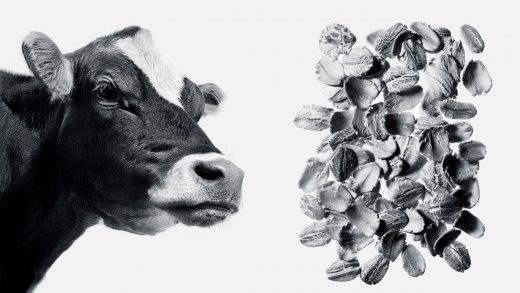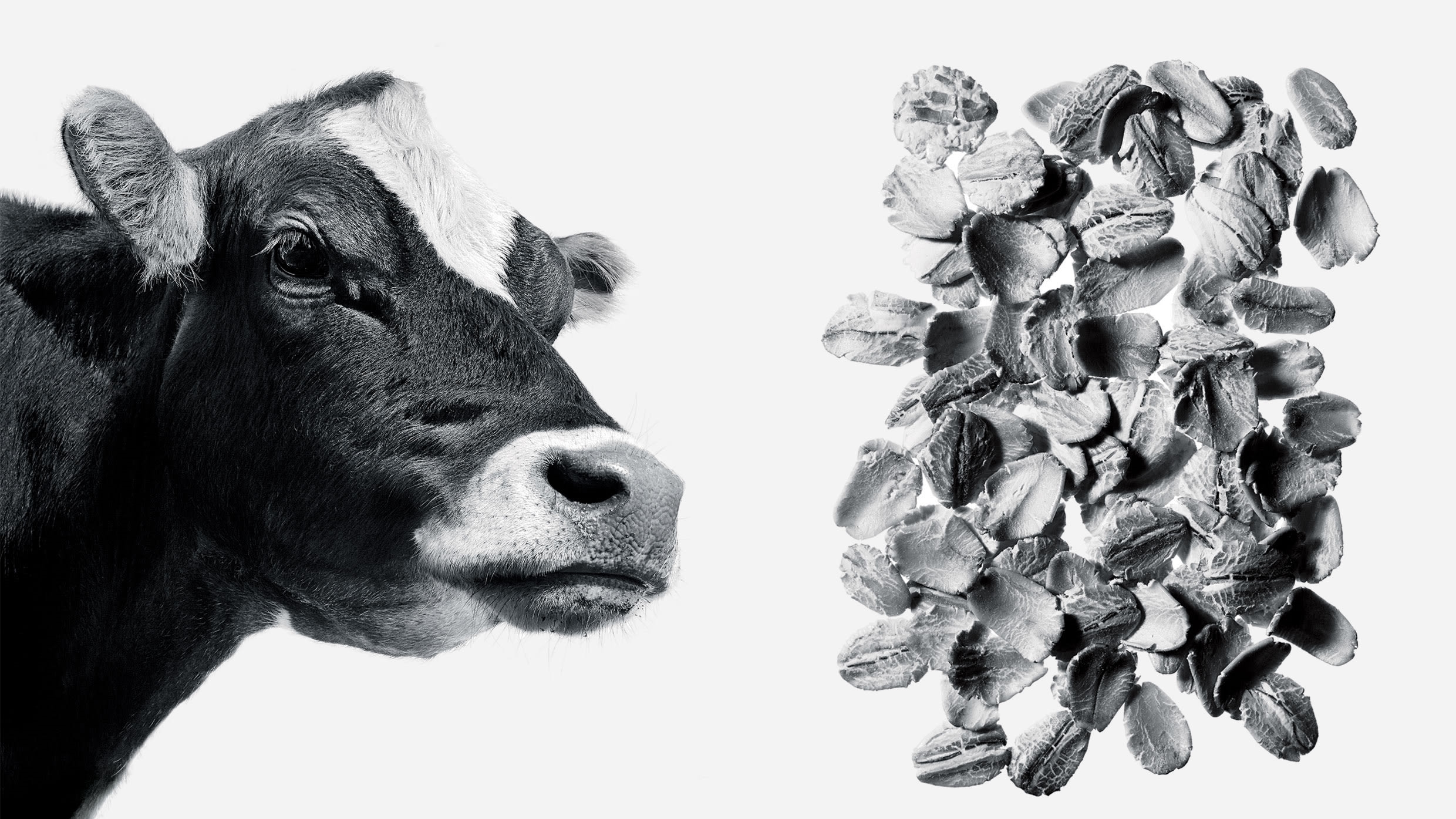Exclusive: Chobani’s empire was built on Greek yogurt. Here’s why its next move is oat milks
Chobani CEO Hamdi Ulukaya is standing in his company’s industrial-chic test kitchen in lower Manhattan, gleefully doing shots. He’s not drinking alcohol, but something that is, at least for him, another kind of controlled substance: milk.
Yes, the Greek yogurt titan—the man who once milked cows for a living and famously bootstrapped what became a $1.5-billion-in-annual-revenue company by getting America hooked on the creamy, tart, and protein-rich yogurt of his Turkish youth—is sensitive to dairy. Around the time his trademark mop of curly hair began turning salt-and-pepper, Ulukaya realized that he was lactose intolerant and stopped drinking milk. (Yogurt, because of the fermentation process, is easier to digest.) Then, about a year ago, he began stealthily developing his own plant-based alternative.
“Awesome, no?” he says, grabbing an unmarked cardboard carton and pouring himself another small glass of his velvety off-white elixir. Dressed on this September morning in a light-blue denim shirt, dark jeans, and blue sneakers, he downs the glass and sets it on a large wooden table topped with rows of other top-secret products. When I finally taste my sample, it’s creamy and smooth, coating my mouth and finishing without the sort of chalkiness or cloying sweetness that I’ve come to expect of plant-based milks. Ulukaya praises it as “very earthy, very comforting.” Each sip, he says, reminds him of the last slurp he used to find at the bottom of his cereal bowl.
In January, after years of expanding its yogurt portfolio with innovations such as crunchy mix-ins and lower sugar levels, Chobani will debut an entirely new product category, called Chobani Oat. The company is launching four oat drinks—plain, vanilla, chocolate, and plain extra creamy—that approximate milk (although Chobani has strategically chosen not to call them that). There will also be a barista edition for coffee shops, a line of fermented-oat yogurts in flavors such as strawberry-vanilla and blueberry-pomegranate, and mix-in varieties with names like Peach Coconut Crisp.
It’s a bold departure for a company that made its name in dairy and is the top seller of yogurt in America. Little more than a decade after it launched, in 2007, Chobani catapulted over Yoplait, Dannon, and other established brands to claim 19% of yogurt sales in this country and a full 43% of the Greek yogurt market. The retail sales of the company’s products have grown by 8% year over year so far in 2019—despite the fact that yogurt sales overall have been slowing for the past few years.
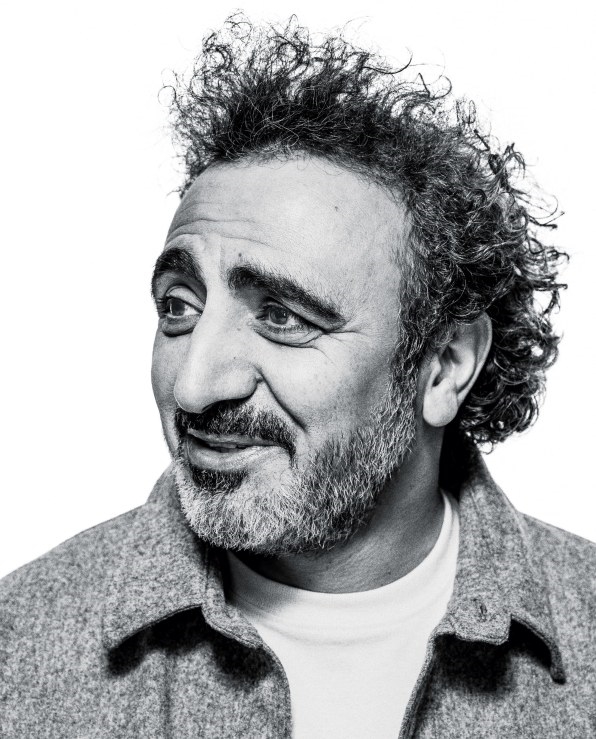
[Photo: Benedict Evans/August Images]
Chobani’s new oat line is designed to boost sales even further by moving the company into an increasingly popular section of the grocery store. After decades of jockeying, first by soy- and then almond-milk pioneers, alternative milks have secured shelf space directly beside cow’s milk in most stores. It turns out you can “milk” almost anything—quinoa, hemp, cashews—although the dairy industry has lobbied hard against producers using that term. The retail milk market in the U.S. (both cow and nondairy) topped $15 billion in 2018. Alternative milks, on their own, pulled in $2.4 billion, a number that’s projected to grow exponentially. Sales of cow’s milk, meanwhile, have fallen by 3% year over year so far in 2019. (This continued decline prompted Dean Foods, the largest U.S. milk producer, to file for Chapter 11 last week.)
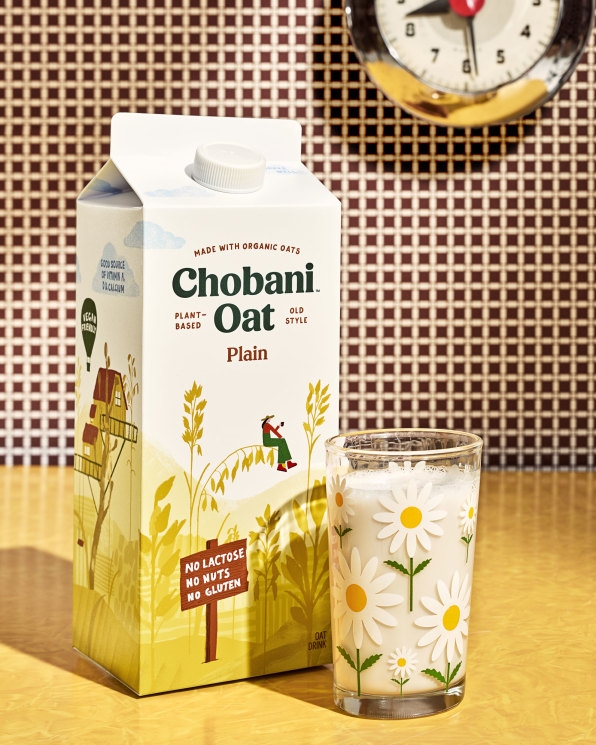
The alt-milk surge is driven both by boomers, who are discovering that lactose intolerance increases with age, and younger generations versed in the carbon footprints of animal-based products. But there have always been drawbacks to plant-based milks: funky tastes, watery consistencies, an inability to mix well with other products. Oat milk is an exception. Its main ingredient is a sustainable cover crop that can be sourced organically without massive amounts of water. Made by a simple enzymatic process and finished with a dash of oil (Chobani uses canola), it’s creamy, slightly sweet (even when it’s made with no added sucrose), and perfect for coffee and baking. Consumers are taking note: The still-nascent category of oat milk generated $40 million in U.S. sales in the 52 weeks ending on August 24, 2019—up from just $6 million for the same period a year earlier, according to Nielsen.
Ulukaya is now betting that he can leverage his company’s resources—which include a million-square-foot manufacturing facility in Twin Falls, Idaho, and a new, 14,000-square-foot research and development lab attached to it—to do for oat-based products what he once did for Greek yogurt: Take them mainstream.
He’s moving aggressively. Grocery stores typically reset their shelves twice a year, in January and July. Ulukaya has routinely capitalized on those moments to drop new products—and turn them into moneymakers. The soft fall light coming through the test kitchen’s expansive windows is a reminder that the next reset is less than four months away. It’s crunch time.
Ulukaya, 47, went from sleeping in a run-down factory to being a billionaire in less than a decade. Born and raised in a Kurdish sheep- and goat-farming family, Ulukaya fled Turkey for the United States in the mid-’90s, fearing that his vocal support for Kurdish rights would be punished by the country’s militaristic regime. He learned English and started a small-scale feta cheese company in upstate New York. When he saw an aging Kraft yogurt plant for sale nearby, in 2005, he took another risk, securing a Small Business Administration loan to build a Greek yogurt enterprise.
As other food startups were selling out to major food companies, Ulukaya was reinvesting in his business. He took a $750 million loan from TPG Capital in 2014, just after opening the new facility in Idaho, which kick-started Chobani’s instantly popular Flip line of yogurts with crunchy mix-ins. The arrangement was fraught, though: Ulukaya needed cash to expand but reportedly chafed at the idea of TPG taking a stake in his company. (The loan included warrants that could have given the private-equity firm control of up to a third of Chobani if it went public.) In 2016, he gave Chobani’s 2,000 full-time employees 10% of the company, a generous move that also served to dilute TPG’s potential shares. HealthCare of Ontario Pension Plan became a minority investor in 2018, and TPG exited, allowing Chobani to remain private and refocus on long-term returns.
Controlling how things get made in-house has allowed Ulukaya to save on overhead, innovate quickly, and ensure fast delivery to stores, even as he puts money toward quality ingredients (everything is rBST-hormone-free and non-GMO) and fair wages. “I managed to figure out how to grow this company, build infrastructure, and stay independent. If I had taken one [of those priorities] off, it would have been a lot easier,” he says. “I had very, very high standards, and that meant that I had to be fast [and] I had to be right 99% of the time.” His record is strong: Chobani’s bet on Flip, for example, helped to boost sales more than 50% in 2016. (An effort to introduce a line of yogurt accompanied by steel-cut oats in 2014, however, was a flop.)
As Chobani has risen, its competitors have become increasingly nimble. They’ve cut the sugars in their yogurts to match Chobani, introduced low-fat Greek lines, and knocked off products like Flip. So Ulukaya, who had long been fascinated with the versatility of oats, directed his team to greener pastures.
Are Plant Based Drinks Better for the Environment? Here’s a Look at What it Takes to Produce 1 liter of Different Kinds of Milk:
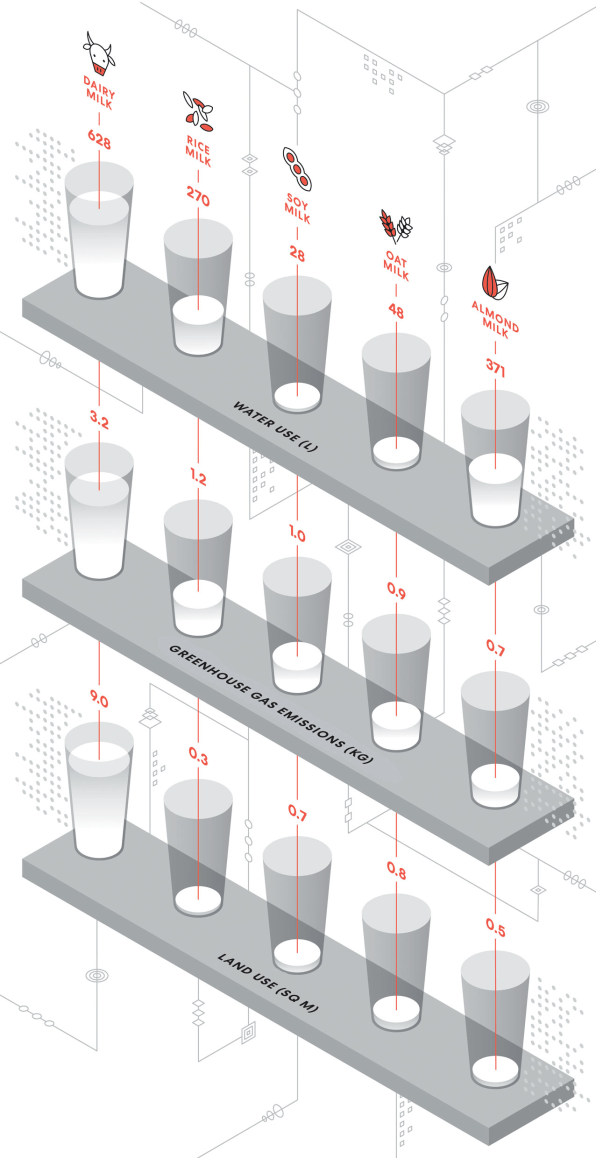
In makeshift test kitchens located largely in trailers outside the Idaho plant, a team of 15 food scientists spent more than a year developing recipes for oat-based products. (The team moved into the new R&D lab in June.) In a sign of Ulukaya’s commitment to the oat line, Chobani decided not to outsource its initial manufacturing and instead invested $50 million to build an extension to its Idaho plant.
Construction is still underway when I visit Ulukaya in New York in mid-September. It’s on track to be done within a month or so, but he’s cutting it close. The company will have started production by early November to hit its rollout target. (It began testing its recipes on its new equipment a few weeks after our meeting.) But Ulukaya doesn’t seem nervous as he continues pulling out prototypes of oat yogurts and drinks for me to taste. He says he’s channeling “the same mindset” as when he was in startup mode. “I don’t like what I see, [so] I’m going to make something really amazing, and I’m going to put those things to shame.”
Ulukaya famously trusts his gut, lactose intolerant or not. As Chobani’s food scientists tracked technical factors such as viscosity and sugar content for the new oat line, they ran taste tests. Most food companies use outside focus groups as they develop a new product; Chobani’s taste tests were nearly all done in-house. Amrish Chawla, Chobani’s director of research and development, says the team quickly learned to rely on the “human instrument” of their collective palates, especially that of their founder. “With Hamdi, you have to look for that smile and twinkle in his eye,” Chawla says. “It tells you right away if he thinks the food is there.” How the rest of the country will receive Chobani Oat will be another story.
Ulukaya and I meet in his expansive, brick-walled corner office in New York’s SoHo neighborhood. We’re supposed to be discussing a mock-up of the Chobani Oat carton, featuring a bright little fairy-tale creature internally called “Mother Oat.” But his mind is on a text he received just before sitting down with me. It’s from the head of a coffee-shop chain that he’s been courting as a possible customer.
Ulukaya grins and shows it to me: It’s a picture of a side-by-side taste test—two half-consumed lattes. “Chobani wins hands down,” the coffee executive has written. “Brother. No exaggeration—the lead barista and trainers all agree—Cho by a mile.”
“So sold?! :)” Ulukaya has replied.
Chobani could be the company that popularizes oat-milk products, but it certainly didn’t invent them. It’s playing catch-up to other players in the alt-milk space, including the sorts of inventive upstarts that Chobani once was. Sweden-based Oatly, most notably, arrived in the United States in late 2016 and began persuading high-end coffee shops to use its oat milks. The company was founded by Rickard Oste, a researcher with Stockholm’s Lund University who saw the world’s growing milk sensitivity as an opportunity to reboot the food system. After studying the alternatives, he came up with a process to mill and liquefy easy-to-cultivate oats into a nutritionally rich solution and began selling Oatly in Sweden in the early ’90s.
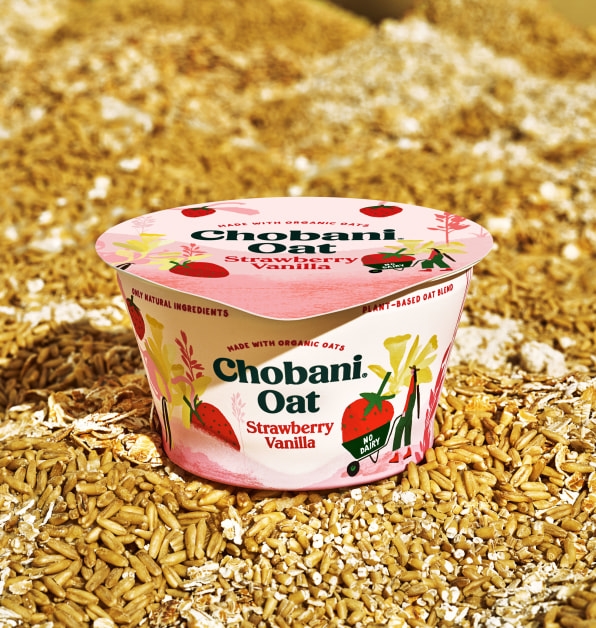
Oat milk now accounts for nearly two-thirds of the alt-milk category in Sweden, where Oatly offers a cream-cheese-like spread, yogurts, and frozen treats. But when Oatly decided to enter the States, oat milk was still just a “rounding error” here, says Mike Messersmith, the company’s U.S. general manager. Oat milk is made with a special blend of enzymes that converts starches into sugars during water-based hydrolysis. When strained—in this case industrially, in a centrifuge—the resulting product gains a natural sweetness and a “micro-foamability” that rivals milk, making it perfect for cutting the bitterness of espresso and creating latte art.
Oatly’s coffee-shop-focused approach to entering the U.S. market worked a bit too well. Several months after its playfully packaged products finally hit grocery stores, in 2018, the company couldn’t keep up with demand. (The shortages fueled a ridiculous aftermarket on the internet, where prices reached around $20 per carton.) Whole Foods now carries Oatly and several other brands, including oat milk from Califia Farms, cofounded by Odwalla founder Greg Steltenpohl. The grocer’s selection and volume of oat-based products is set to increase further in 2020, according to Parker Brody, a senior global buyer for Whole Foods.
Ulukaya intends to lead the U.S. expansion. More than half of the country’s grocery and convenience stores already carry Chobani. The company says it expects almost all of its existing retailers to adopt Chobani Oat lines in full, although it declined at press time to name any grocery chains that had committed. Chobani projects that within two years, oat products will account for at least 10% of the company’s sales. Ulukaya is also, conveniently, the majority owner of the 30-store coffee chain La Colombe, which already offers an oat-milk draft latte on tap and in ready-to-drink cans. La Colombe currently uses Oatly, although, unlike the roaster Stumptown, it doesn’t feature the Oatly name on its products. After the new year, it’ll be switching to Chobani.
Oatly is stepping up, though. The company opened its first stateside manufacturing plant in New Jersey in April and is slated to unveil another in Ogden, Utah, in the spring. For the past couple of years, the company’s sales have been divided equally between the several thousand coffee shops it supplies and about 5,000 retail stores. It’s now capable of doubling its grocery distribution within the next 12 months, while focusing on “thoughtful” growth, Messersmith says, such as the line of ice-cream substitutes it debuted earlier this year. “[We] don’t want to disappoint anybody by trying to go too far, too fast,” he says.
Chobani’s toughest competitor, though, may be itself. Darren Seifer, a food-and-beverage analyst with NPD Group, predicts that plant-based products will “cannibalize” some of the customer base of traditional dairy goods. Ulukaya says he doesn’t see dairy-based foods disappearing, but he understands the growing concerns (environmental, animal welfare) around cow’s milk. With the oat-based line, Chobani is covering its bases by essentially creating two food divisions, which Ulukaya internally calls “Chobani white” and “Chobani green.”
The proximity of these divisions hints at what comes next for Chobani. Defeating Yoplait is one thing. Going up against Yoplait parent company General Mills, especially as consumer tastes shift, is a much larger effort. Like any food giant, Chobani is already flexing its new capabilities in interesting ways. Why not use the company’s newfound access to milk cartons to roll out Chobani’s first dairy-based creamer? Or its fresh supply of oats to try again with that oats-on-the-bottom yogurt that misfired five years ago? Along with everything else, both products are coming next year.
A version of this article appeared in the Winter 2019/2020 issue of Fast Company magazine.
Fast Company , Read Full Story
(53)

